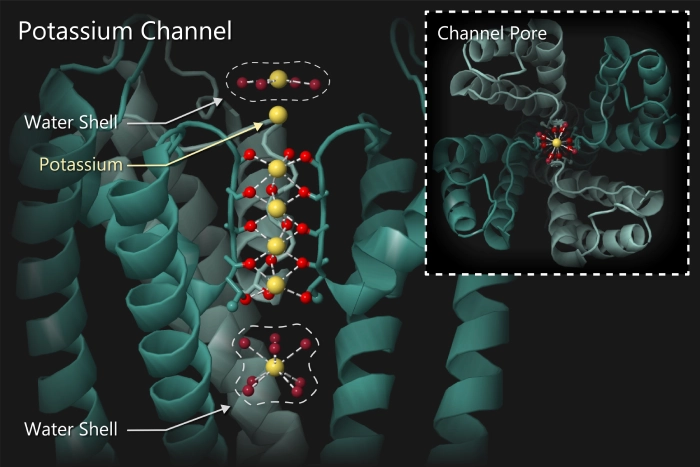Unlocking a New Path in Medulloblastoma Therapy
Researchers at The Hospital for Sick Children (SickKids) have uncovered a promising new target for treating medulloblastoma, the most common malignant pediatric brain tumor. Their latest study, published in Developmental Cell, reveals that inhibiting the KCNB2 gene—a key player in potassium channel regulation—could offer a new therapeutic approach to combat this aggressive disease.
Tumor-Proliferating Cells: The Root of Relapse
Medulloblastomas, like many other cancers, harbor specialized tumor-propagating cells responsible for sustaining tumor growth and recurrence. These cells often exhibit resistance to conventional therapies such as chemotherapy and radiation, leading to a high risk of relapse. Identifying vulnerabilities within these cells is crucial for developing more effective treatments.
Dr. Xi Huang, Senior Scientist in the Developmental, Stem Cell & Cancer Biology program at SickKids, highlights the significance of their discovery: “By targeting a specific potassium channel, we were able to reduce tumor growth without affecting surrounding healthy cells. This could pave the way for groundbreaking treatments in pediatric brain cancer.”
Deciphering the Genetic Blueprint of Tumor Growth
The research team, led by Dr. Michael Taylor, employed a genetically engineered preclinical model to identify genes linked to medulloblastoma progression. Among the candidates, two genes associated with potassium channels stood out. Further analysis of tumor transcriptomes in human patients confirmed an overexpression of these channels, suggesting a critical role in tumor biology.
Dr. Taylor, who is also a Professor at Baylor College of Medicine and Texas Children’s Cancer Center, elaborates: “We developed a novel screening method that pinpoints essential genes for tumor survival. This approach helped us identify KCNB2 as a key player in medulloblastoma proliferation.”
How Potassium Disruption Halts Tumor Growth
Potassium ions play a fundamental role in cellular functions, including maintaining proper fluid balance. The study found that blocking KCNB2 disrupted this balance, causing tumor cells to swell and lose structural integrity—akin to an overfilled water balloon bursting. This cascade of cellular damage ultimately impeded tumor propagation.
Dr. Jerry Fan, a former Ph.D. student in Huang’s lab and the study’s first author, describes this mechanism: “Without KCNB2, tumor cells fail to maintain their integrity, leading to a breakdown of the tumor’s growth process.”
The Future of Medulloblastoma Therapy
Encouraged by these findings, the researchers are now working on translating this discovery into viable treatments. With support from the SickKids Industry Partnerships & Commercialization (IP&C) office, the team has screened over 30,000 small molecules to identify potential KCNB2 inhibitors. The strongest candidates will soon undergo preclinical testing.
Dr. Huang states: “Our next goal is to pinpoint the most effective KCNB2 inhibitor to develop targeted therapies for medulloblastoma patients. With dedicated support from SickKids and our research partners, we aim to bring these findings from the lab to real-world clinical applications.”
This research was made possible through funding from numerous organizations, including the Sontag Foundation, Canadian Cancer Society, American Brain Tumor Association, and the National Institutes of Health (NIH). For further details, refer to the original publication in Developmental Cell.

Commentary by SuppBase Columnist Alice Winters
The findings presented in this study open an intriguing chapter in medulloblastoma research, underscoring the untapped potential of ion channels as therapeutic targets. While cancer research often focuses on genetic mutations and metabolic pathways, the role of potassium channels in tumor biology has remained relatively underexplored. This study challenges that oversight and makes a compelling case for KCNB2 as a promising intervention point.
From a pharmacological standpoint, the search for effective KCNB2 inhibitors is an ambitious yet logical next step. However, the road from identifying a molecular target to developing an FDA-approved treatment is fraught with challenges. Ion channel inhibitors are notoriously difficult to design due to their widespread physiological roles, raising legitimate concerns about off-target effects and toxicity.
Another critical consideration is the study’s reliance on preclinical models. While the engineered models provide valuable insights, they do not always perfectly replicate human tumor behavior. Thus, clinical validation remains a crucial hurdle before these findings can be translated into patient therapies.
Additionally, a broader discussion on potassium channel modulation in cancer is warranted. If KCNB2 inhibition proves successful in medulloblastoma, could similar strategies apply to other potassium-dependent tumors? The potential for cross-applications in oncology makes this an exciting area for further exploration.
Ultimately, this research represents an important step in refining medulloblastoma treatment. While it is not yet a silver bullet, it highlights a fresh perspective that could inspire further breakthroughs in targeting pediatric brain cancers. Moving forward, it will be essential to balance enthusiasm with a rigorous assessment of safety, efficacy, and real-world applicability.



